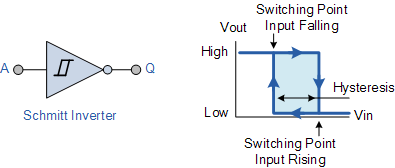NAND gates have two bits of input and a single bit of output.
Since NAND is not associative, the definition is based on AND.
In particular
NANDk(x1, x2,...,xn) = NOT( ANDk(x1, x2,...,xn) )
Thus, NANDk is the negation of ANDk.
The truth table defines the behavior of this gate. It's the negation of AND.
The function implemented by NAND gates has interesting properties:
The function is symmetric. Thus, x NAND y == y NAND x. This can be verified by using truth tables.
The function is not associative. This can be verified by using truth tables.
Because of these properties, NANDk is defined from ANDk, and not built from NAND gates.



















